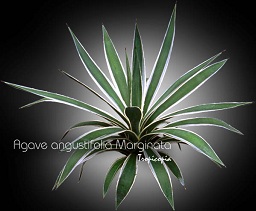Table of contents
Variegated Carabbean Agave

Latin Name: Agave angustilolia ‘Marginata’
Category: Cactus & Succulent
Family: Amaryllidaceae
Origin: India
Climate: Tropical
Growing Zones: 10, 8
Care Instructions
The Variegated Carabbean Agave (Agave angustilolia ‘Marginata’) is a tropical plant that originates from India. This cactus & succulent plant belongs to the Amaryllidaceae family and is well-suited for growing in USDA zones 10, 8.
Complete Care Guide for Variegated Caribbean Agave (Agave angustilolia ‘Marginata’)
Watering Requirements
The Variegated Caribbean Agave is a drought-tolerant succulent that thrives in well-draining soil. When it comes to watering, it is essential to adopt a less-is-more approach. During the growing season, which typically spans from spring to early fall, water the plant thoroughly but allow the soil to dry out completely between waterings. This usually translates to watering every 2-3 weeks, depending on the climate and humidity levels. In the winter months, reduce watering significantly, as the plant enters a dormant phase and requires minimal moisture. Overwatering can lead to root rot, so always check the soil moisture before adding water.
Light Conditions
Variegated Caribbean Agave flourishes in bright, indirect sunlight but can also tolerate full sun conditions. Ideally, place your agave in a location that receives at least 6 hours of sunlight daily. If grown indoors, a south or west-facing window is perfect for providing the necessary light. However, be cautious of intense afternoon sun, which can scorch the leaves, especially in hotter climates. If you notice the leaves becoming pale or elongated, it may be a sign that the plant is not receiving enough light. Conversely, if the leaves are browning at the tips, it may be getting too much direct sunlight.
Soil Preferences
The ideal soil for Variegated Caribbean Agave is a well-draining cactus or succulent mix. You can also create your own mix by combining regular potting soil with sand, perlite, or pumice to enhance drainage. The pH level should be slightly acidic to neutral (around 6.0 to 7.0). Fertilization is not necessary for this plant, but if you choose to feed it, use a diluted, balanced fertilizer during the growing season, applying it once a month. Avoid fertilizing in the winter months when the plant is dormant, as this can lead to nutrient buildup and potential damage to the roots.
Pests and Diseases
While Variegated Caribbean Agave is relatively pest-resistant, it can occasionally be affected by mealybugs, aphids, and spider mites. Regularly inspect the leaves for any signs of infestation, such as sticky residue or webbing. If you notice pests, treat them promptly with insecticidal soap or neem oil, ensuring to cover both the tops and undersides of the leaves. Additionally, the plant can be susceptible to root rot if overwatered or planted in poorly draining soil. To prevent this, ensure proper watering practices and choose the right soil mix. If you suspect root rot, remove the plant from its pot, trim away any affected roots, and repot it in fresh, dry soil.
Special Care Tips
To maintain the health and beauty of your Variegated Caribbean Agave, consider the following special care tips: First, ensure that the pot has drainage holes to prevent water accumulation. If growing outdoors, choose a location that offers some protection from heavy rain or frost, as excessive moisture can be detrimental. During the growing season, you can occasionally rotate the pot to ensure even growth and prevent the plant from leaning towards the light source. Additionally, clean the leaves with a damp cloth to remove dust and debris, which can hinder photosynthesis. Finally, if you live in a colder climate, consider bringing the plant indoors during winter months to protect it from frost damage.








